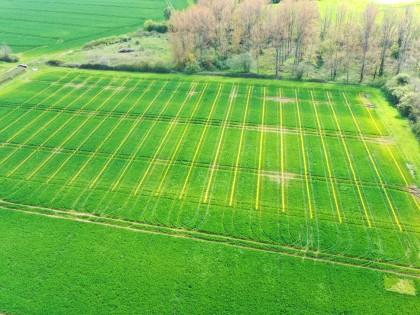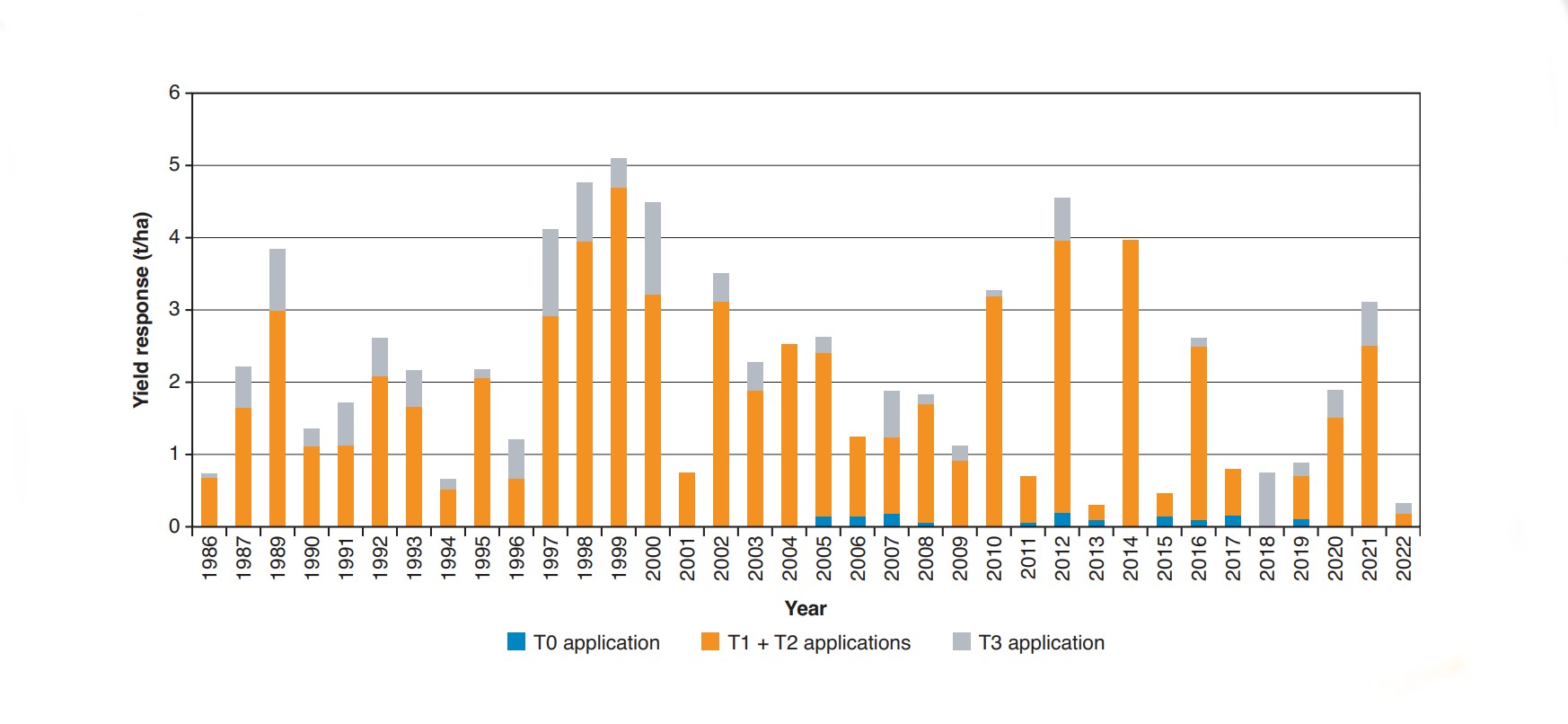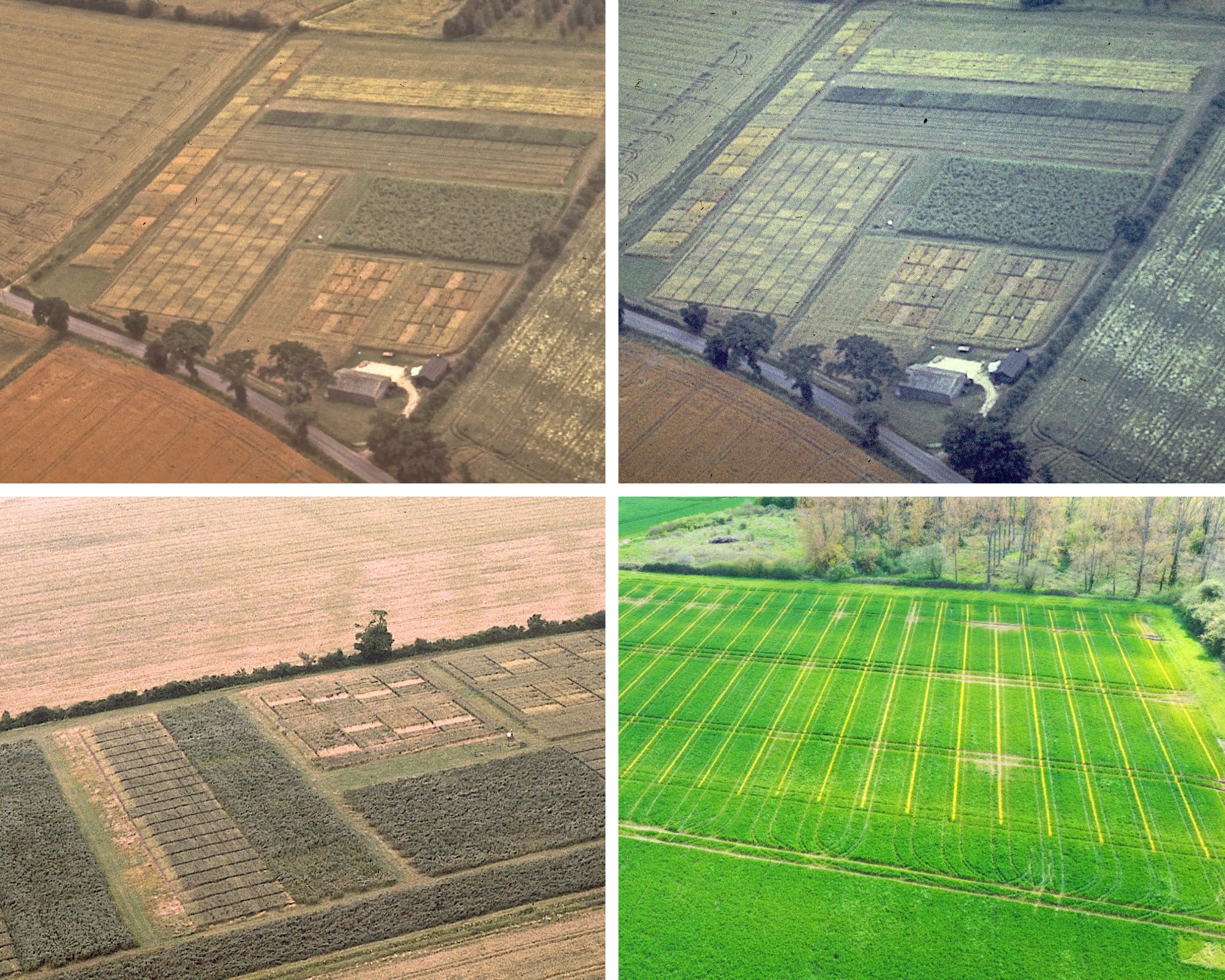- About
-
Research
- Agronomy and farming systems
-
Agricultural crop research
-
Research projects - agriculture
- About SASSA-SAI
- BioBoost
- Biomass Connect
- CTP for Sustainable Agricultural Innovation
- Climate Ready Beans - workshop presentations (March 2022)
- Crop diversity HPC cluster
- Designing Future Wheat
- Final project workshop
- Get involved
- List of materials
- News and updates
- Partners
- Rustwatch
- The Sentinel Crop Disease Surveillance Network
- The research team
- UK Cereal Pathogen Virulence Survey
- UK wheat varieties pedigree
- Weed management - IWM Praise
- Crop breeding
- Crop characterisation
- Data sciences
- Genetics and pre-breeding
- Plant biotechnology
- Plant pathology and entomology
- Resources
-
Research projects - agriculture
-
Horticultural crop research
-
Research projects - horticulture
- Augmented Berry Vision
- BEESPOKE
- Boosting brassica nutrition in smart growing systems
- CTP for Fruit Crop Research
- Develop user-friendly nutrient demand models
- Egg laying deterrents for spotted wing drosophila
- Enhancing the nutritional quality of tomatoes
- Improving berry harvest forecasts and productivity
- Improving vineyard soil health through groundcover management
- Intelligent growing systems
- Knowledge transfer for sustainable water use
- POME: Precision Orchard Management for Environment
- RASCAL
- STOP-SPOT
- UV-Robot
- Crop science and production systems
- Genetics, genomics and breeding
- Pest and pathogen ecology
- Field vegetables and salad crops
- Plum Demonstration Centre
- The WET Centre
- Viticulture and Oenology
-
Research projects - horticulture
- Crop Science Centre
- Research Projects
- Research Publications
-
Services
- Analytical Services
- Business Development
- Commercial trial services
- Membership
- Plant breeding
- Plant characterisation
- Seed certification
-
Training
-
Technical agronomy training
- Advanced crop management of bulb onions
- Advanced crop management of vegetable brassicas
- Advanced nutrient management for combinable crops
- Benefits of cover crops in arable systems
- Best practice agronomy for cereals and oilseed rape
- Developing a Successful Strategy for Spring Crops
- Disease Management and Control in Cereal Crops
- Incorporating SFI options into your rotation
- Protected Environment Horticulture – Best Practice
- Techniques for better pest management in combinable crops
- Crop inspector and seed certification
- Licensed seed sampling
-
Technical agronomy training
- News & Views
- Events
-
Knowledge Hub
- Alternative and break crops
-
Crop genetics
- POSTER: Diversity enriched wheat (2025)
- POSTER: Genetics of wheat flag leaf size (2024)
- POSTER: Wheat yield stability (2024)
- Poster: Traits for future cereal crops (2022)
- POSTER: wild wheat fragment lines (2022)
- POSTER: Improving phenotyping in crop research (2022)
- PRESENTATION: Plant breeding for regen ag
- Poster: Designing Future Wheat (2020)
- Crop nutrition
-
Crop protection
- POSTER: Understanding the hierarchy of black-grass control (2025)
- POSTER: Emerging weed threats (2025)
- POSTER: Disease control in barley (2025)
- Poster: Weed seed predation in regen-ag (2024)
- POSTER: Disease control in winter wheat (2025)
- POSTER: Mode of action (2023)
- POSTER: Inter-row cultivation for black-grass control (2022)
- POSTER: UKCPVS winter wheat yellow rust in spring 2025 (2025)
- Poster: Management of Italian ryegrass (2021)
- POSTER: UKCPVS winter wheat rusts - 2024/25 review (2025)
- POSTER: UKCPVS disease monitoring and the benefit to UK growers (2025)
- POSTER: Diagnosing and scoring crop disease using AI (2025)
- POSTER: Finding new sources of Septoria resistance (2024)
- POSTER: Fungicide resistance research (2024)
- POSTER: Detecting air-borne pathogens (2024)
- POSTER: Oilseed rape diseases (2024)
- POSTER: Fungicide resistance research (2024)
- POSTER: Improving chocolate spot resistance (2022)
- Poster: Pathogen diagnostics (2022)
- Fruit
- Regen-ag & sustainability
-
Seed certification
- POSTER: Wheat DUS (2024)
- POSTER: Innovation in variety testing (2024)
- POSTER: AI and molecular markers for soft fruit (2024)
- POSTER: Barley crop identification (2023)
- POSTER: Herbage grass crop identification (2023)
- POSTER: Herbage legume crop identification (2024)
- POSTER: Minor cereal crop inspecting (2023)
- POSTER: Pulse crop identification (2023)
- POSTER: Wheat crop identification (2023)
-
Soils and farming systems
- POSTER: Checking soil health - across space and time (2024)
- POSTER: Checking soil health - step by step (2024)
- POSTERS: Changing soil management practices (2022)
- Poster: Monitoring natural enemies & pollinators (2021)
- POSTER: Soil structure and organic matter (2024)
- POSTER: Novel wheat genotypes for regen-ag (2024)
- Video: New Farming Systems project (2021)
- Video: Saxmundham Experimental Site (2021)
- POSTER: Impact of prolonged rainfall on soil structure (2024)
- POSTER: Soil & agronomic monitoring study (2024)
- POSTER: The impact of rotations & cultivations (2024)
- VIDEO: Great Soils; soil sampling guidelines (2020)
- Poster: Soil invertebrates within arable rotations (2024)
- VIDEO: Soil health assessment (2021)
- POSTER: Saxmundham - modern P management learnings
- POSTER: Saxmundham - 125 years of phosphorus management
- Poster: Soil phosphorus - availability, uptake and management (2025)
- POSTER: Morley long term experiments (2025)
- POSTER: Exploiting novel wheat genotypes for regen-ag (2025)
- Video: Saxmundham Experimental Site (2021)
- Varieties
Long-term value in long-term experiments

Soils and farming systems specialist David Clarke walks us through the rich resource of long-term agricultural experiments, that provide vital insights into how modern farming practices are impacting soil health and crop productivity...
It is difficult to quantify the exact number of long-term experiments (LTE) globally; in 2003 there was estimated to be around 600 field experiments over 10 years old but the figure is likely to be higher today.
A useful resource documenting the details of these LTEs is GLTEN, a network of global long-term experiments across six continents which includes the majority of those found in the UK.
UK agriculture is lucky to have a rich resource of long-term experiments. There are thought to be 25 experiments worldwide greater than 120 years old; 11 of them are in the UK. NIAB delivers several LTE on behalf of The Morley Agricultural Foundation (TMAF) investigating rotations, cultivations, fungicide response, soil amendments and mineral fertilisers (Figure 1).
The oldest of these, the Saxmundham Experimental Site was set up in 1899 and is regarded as the third oldest continuing agricultural experiment in the country.
In June 2023 Rothamsted Research hosted the Association of Applied Biologists (AAB) conference ‘Long term experiments: meeting future challenges’, on the 180th anniversary of the Broadbalk winter wheat experiment, the world’s longest running field trial.
The conference emphasised the importance of LTE in tackling the problems and questions of 21st century agricultural systems. Nathan Morris and David Clarke attended the conference and presented long-term findings from some of the TMAF-supported long term experiments, managed by NIAB, which are used regularly to explore the challenges farms face today.
Figure 1. Long-term experiments supported by the Morley Agricultural Foundation (TMAF) delivered by NIAB investigating rotations, cultivations,fungicide response, soil amendments and mineral fertiliser
| Experiment | Start date | Funders | Location |
|---|---|---|---|
| New Farming Systems Cultivations | 2007 | TMAF, JC Mann Trust | Morley, Norfolk |
| The Manure and Organic Replacement (MORE) | 2011 | TMAF | Morley, Norfolk |
| New Farming Systems Rotations | 2007 | TMAF | Morley, Norfolk |
| Sustainable Trial in Arable Rotations (STAR) | 2005 | TMAF, Felix Thornley Cobbold trust |
Otley, Suffolk |
| The Saxmundham experimental site: Rotation I | 1899 | TMAF | Saxmundham, Suffolk |
| Morley fungicide response winter wheat and winter barley | 1986/2002 | TMAF | Morley, Norfolk |
| Periodic lift in sugar beet | 1997 | TMAF | Morley, Norfolk |
| The Morley Soil and Agronomic Monitoring Study (SAMS) | 2018 | TMAF | Morley, Norfolk |
Adapting long-term experiments to meet current and future challenges
The Saxmundham experiment’s primary goal was to investigate and compare crop and soil response to mineral phosphorus and potassium fertilisers, which in 1899 were relatively modern technologies, compared with the traditional approach of regular applications of farmyard manure (FYM). These original plots are still in place.
Over the past 120 years Saxmundham has been fundamental in developing an understanding of phosphorus in managing soil fertility and cropnutrition and has shaped many of the management guidelines used today.
However, as is to be expected with experiments that span decades and, in the case of Saxmundham centuries, some treatments become dated, lose relevance and require updating. Soil analysis showed that two treatments that had not received any P or amendment additions for a number of decades, bonemeal (not applied since 1990s), and the N only plots had similar soil indices to the untreated. These plots therefore provided a platform to test new modern P management techniques.
In autumn 2018, two new treatments were introduced. Foliar applied P fertilisers have the potential to reduce dependence on soil applied P. The historic N only treatments now receive repeated applications (up to four per season) of a foliar phosphorus fertiliser (Folex P) along with mineral K fertiliser to quantify how much of a crop’s P demand can be met through foliar applications.
The plots historically receiving bonemeal now receive annual additions of green waste compost (typically 18 t/ha) to match the organic matter additions applied in the FYM plots (FYM applied at 25 t/ha). Compost has a lower P content than FYM therefore NIAB is investigating whether by increasing soil organic matter soil structural properties can be improved and soil P indices can be managed at lower levels where improved rooting and plant-soil interactions improve P uptake.
Testing innovative ideas on existing platforms
The fundamental treatments of a long term experiment may not necessarily need to change to provide answers to new questions. Modern technologies and measurement techniques can be employed to give new understanding to the interactions arising from the underlying historic management techniques.
For example, recently PhD projects have used techniques such as root length colonisation measurement techniques to distinguish distinct levels and communities of arbuscular mycorrhizal colonisations from the use of cover crops in the New Farming Systems rotations experiment.
Another project used X-ray computed tomography to show differences in pore composition between the rotational systems at the Sustainable Trial in Arable Rotations (STAR) trial.
LTE can also be used to test new hypotheses by building on the treatments and long-term effects of these already in place. In autumn 2023 the 24m x 36m plots on the NFS cultivations experiment were split into to 16 smaller plots growing novel and conventional wheat lines with current optimal or a reduced N rate, on top of the respective underlying historic cultivation treatment.
The aim is to identify lines that are best suited to regenerative agriculture practices such as reduced cultivation intensity and lower synthetic nitrogen inputs, with the data from the conventional varieties under optimal N still contributing to original project aim and dataset.
Long-term experiments for monitoring system change
Figure 2. Yield responses of winter wheat (typical farm varieties selected for moderate disease resistance) to fungicide programmes at Morley

It is said that you cannot change the direction of the wind, but you can adjust your sails to reach a destination. In the case of climate change the ‘wind’ is literally changing and as the effects of climate change impact our production systems, long-term experiments are critical for understanding how our cropping systems, soils and environment are responding and what interventions (how to adjust our sails to flog the metaphor further) can enhance our resilience.
The Morley winter wheat fungicide response trial (Figure 2) has been running since 1986 and provides an annual appraisal of disease pressure and fungicide performance for the area. Since 2005 an application at T0, or Growth Stage 30, timing has been included. However, response has historically been relatively small.
With climate change it is expected that autumn and winters will become warmer and wetter across the region, meaning conditions might become more conducive for disease development. However, the value of the T0 timing has yet to be seen, although we can see how the yield response to fungicide strategies varies significantly by season.
Additionally, these experiments can provide an opportunity monitor how modern technologies and changes in legislation impact production compared to a historic baseline. In the winter wheat fungicide response trial, NIAB has been observing the impact of changes in chemistry (and loss of active ingredients, such as of chlorothalonil). In the future, we may be able to see how modern technologies such as gene editing compare to historical controls.
New long-term experiments
Historically long-term agricultural experiments have often been designed to test the effects of a specific treatment or factorial combination of treatments, such as fertiliser/manure rate or type on soil and crop properties. These experimental designs make it difficult to study impacts on chosen metrics where the whole system has changed.
This was recognised in the design of a new long term field experiment at Rothamsted Research (Large-Scale Rotation Experiment). Instead, this new design enables comparison between farming systems that differ in terms of multiple interactive management practices, including rotation diversity, cultivation regime and amendment use. This will allow for better understanding of how a system meets challenges relevant to modern agriculture such as achieving carbon neutrality or farming free of pesticides.
However, due to the complex number of factors that are modified in each system, a traditional replicated block experiment was economically and spatially impractical and the field trial design required adaption building on advances in statistical analysis and data exploration.
The Morley Soil and Agronomic Monitoring Study (SAMS) is a new type of long-term study monitoring datasets of actual farm practice alongside the long-term plot-based studies at Morley. Although not strictly an experiment that tests different treatments it fills a critical gap in the chain linking research and its application. The study consists of 30 representative monitoring sites across Morley Farms (including sites with high, low and unstable yields as well as three headland sites and one long-term grass site) that were identified using yield map analysis techniques.
Morley SAMS aims to provide a long-term record of how modern agricultural best practice implemented in a conventional arable system impacts soil health and crop productivity over time. A set of annual and rotational soil and crop measurements record the variation in both soil properties and crop performance through space and time. The dataset is now five years old and is already yielding insights into the variation and driving factors of organic matter differences between and within fields, together with the impacts of soil organic matter on crop response to inputs.
Figure 3. Saxmundham site through the years. L-R 1978, circa 1980, 1986, 2023

Long-term results
Annual reports for the Saxmundham, winter wheat and barley fungicide response and STAR experiments can be found on the NIAB Agronomy Membership website and the TMAF website. All these experiments would not be possible without the help and enthusiasm of the host farmers who carry out many of the treatment operations.
This article originally appeared in the Autumn 2023 edition of NIAB’s Landmark magazine. Landmark features in-depth technical articles on all aspects of NIAB crop research, comment and advice. You can sign up for free and get Landmark delivered to your door or inbox:





